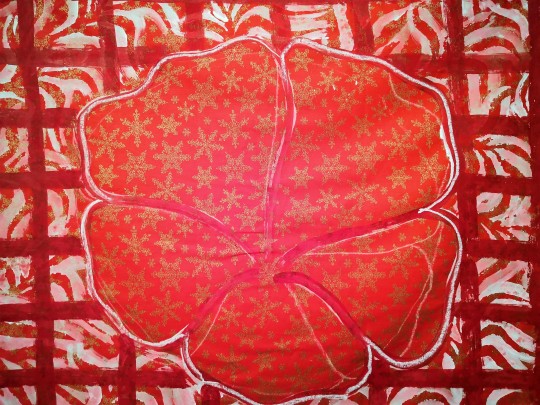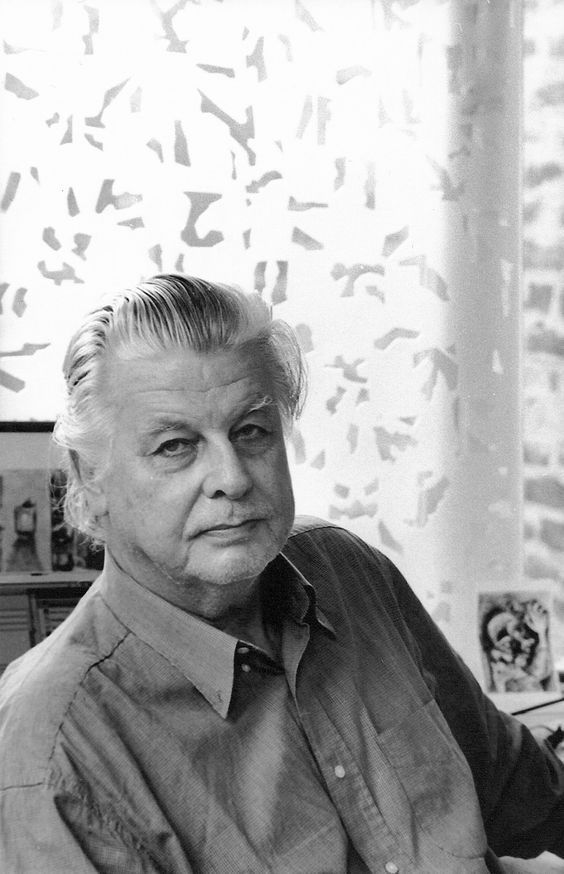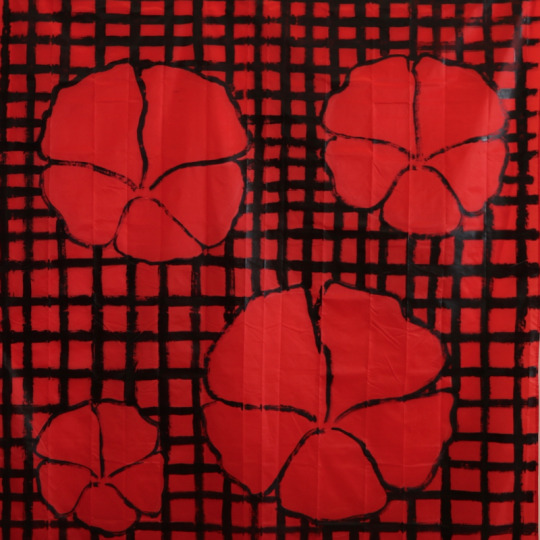#Rouan
Explore tagged Tumblr posts
Text

"Rupture pour Tous" d'Éric Capitaine (2016) avec Benjamin Lavernhe, Elisa Erka, Aïssa Maïga, Camille Chamoux, Brigitte Roüan et Sam Karmann, février 2025.
1 note
·
View note
Text
Apologies AU - "Allergies"]
The kinds of things Noir put up with...
--
CW: implied sexual abuse of a minor (dialogue) + emetophobia
BLEAK AF + NO HOPE / NO HAPPINESS
it's also very sketchy and hastily drawn
--


-
"You're allergic to fish, beef, chicken, pork, lamb..." "What did you used to eat before coming here?"
"..............." "...I can't remember anymore..."
-
posting this after all, sans context.
#Apologies AU#MIND THE CONTENT WARNINGS#cw: emetophobia#cw: angst#cw: dark fiction#cw: shark teeth#Noir Fontaine#Raquelle (Dark Rimura)#...Not tagging Adeleine even though she's here in the bg#That's the most of a character design Rouan's ever gonna get#He's this story's 'Murder Goblin' even though he didn't technically kill anyone (unless spiritually counts)
17 notes
·
View notes
Photo

François Rouan - Mapple Cendre verte, 2002
encaustic paint on assembled fabric (185 x 144 cm)
20 notes
·
View notes
Text





"Journal d'Atelier" : travaux exploratoires de François Rouan pour les vitraux de Fontevraud.
Le peintre François Rouan s'est vu confier la réalisation des vitraux monumentaux du réfectoire de l'Abbaye de Fontevraud. L'installation devrait se faire durant toute l'année 2025.
L'appel d'offre porte sur la réalisation d'une exposition de peintures et de dessins de recherche en vue de la réalisation de cette œuvre. Le lieu d'exposition est assez ingrat : il s'agit d'une galerie qui surplombe le cloître et le réfectoire, et il n'obéit pas aux règles habituelles en la matière (pas de climatisation, de surveillance etc.).
Mon parti-pris consiste à présenter les œuvres en tant qu'esquisses, donc toujours sur un plan incliné. Je fais réaliser des meubles qui recréent un espace dans la galerie et sécurisent les œuvres. François Rouan et la commissaire, Nicole Phoyu-Yedid, apprécieront tout particulièrement cette proposition.


Dans la galerie sud, je recouvre un coffrage d'un vaste panneau sur lequel sont portées des citations de l'artiste. Afin de mettre en valeur la prise de lumière des baies, je fais réaliser un glacis nacré face aux ouvertures, et je traite les textes en lettrage chrome.
Réalisation du mobilier : Adimes agencement.
Abbaye de Fontevraud, 7 juin 2024 - 1 juin 2025
0 notes
Text
INSPEKTOR MEGRE U AKCIJI
„Svako ima pravo na slobodu mišljenja i izražavanja, što obuhvata i pravo da ne bude uznemiravan zbog svog mišljenja, kao i pravo da traži, prima i širi informacije i ideje bilo kojim sredstvima i bez obzira na granice“. (Univerzalna deklaracija o ljudskim pravima) . ŽIVOT MISTER BINA U NEOLIBERALNIM DIKTATURAMA . Igor Mekina u svome tekstu „Život mister Bina u neoliberalnim diktaturama“ na…
1 note
·
View note
Text
In a Holiday Inn Express off 96
Sunk in white sheets, we pass a hymn from throat to throat. Hymn pagan and voluptuary, in praise of only this: Sanctuary of walls, fading daylight, the miracle of two bodies tapping the source, ancient wellspring that murmurs in a language spoken in ritual silence, tactile and mute. Twilight dims the linen’s luster as you shine into me, lips transmuting sensation to color, shades of mineral and…
View On WordPress
0 notes
Text
youtube
🎄😘🤌
A great last few months for Aunty Donna content (inc getting to see them live for the first time! 🧡)
- The 3AW Christmas Special 2023 (From episode 381 - "3AW Christmas Special 7")
- "Always Room For Christmas Pud" annual re-issue
- Debut of the seminal work "Always Room For Panettone"

#Youtube#aunty Donna#Christmas#broden kelly#zach rouane#mark bonanno#Aunty Donna podcast#Zachary rouane#absurdism
0 notes
Photo

JulietteStyle 📸😜😉😀👍👌💣💥⭐️✨💫🙈🙊 #arystyle #arystyle_music #sallededanse #breakdance #bboying #hiphopdance #bgirl #bboy #dedicace #rouans #nantes https://www.instagram.com/p/Cp_F2l0sFqX/?igshid=NGJjMDIxMWI=
#arystyle#arystyle_music#sallededanse#breakdance#bboying#hiphopdance#bgirl#bboy#dedicace#rouans#nantes
0 notes
Photo

Centre Montagne
UNGANT, ex-GARÇON, petit Trait breton, rouan, 1 m. 52, 4 ans en 1924, par Chiny, Trait ardennais aux Haras, à M. Le Gall, de Carnoët-en-Callac, Région de Cornouailles (Côtes-du-Nord) — Acheté pour les Haras Nationaux en 1924
Cliché E. Frouin
Stud Book No 6718
E. Frouin, 1927, Le Cheval Breton.
#Breton#Petit Trait breton#étalon#Ungant ex-Garçon#cheval de trait#stallion#draught horse#draft horse#E. Frouin#1927#Le Cheval Breton
19 notes
·
View notes
Text
Nirou-ki writing and Orthography

The history of the script
The Matonare-ki, the writing system with which Nirou-ki is written has 21 letters or characters, which are typically placed into four groups or classes. These groups are largely an artifact of how the script came into existence as it was adapted and modified from the Kaitian script introduced to Nirou in the late Classic period (circa 1800 BCE) .
The first eleven characters; the Kaitinyra, are relatively direct adaptions from the Kaitian script, retaining at least the ancient Nirouan approximation of their original Kaitian reading. These letters tend to be used in the scripts of many languages in Nirou, even those outside of the Rouan language family that Nirou-ki belongs to.
The next group, the so-called "scribal letters" are derived from pre-existing Kaitian characters, but used very unusual readings of those characters to approximate sounds native to languages in Central Nirou that weren't easy to express in the original Kaitian script. It is now generally accepted that these novel readings were inspired by similar looking characters used in the Nicre-xi script, as Nicrean traders had some contact with parts of peninsular Nirou during the early post-classic (circa 1500 BCE). Additionally, at least in modern Rouan languages (including Nirou-ki) the last three characters of the Kaitinyra, "Ke", "Ta", and "On", are generally accepted to have their modern readings at least partially derived from Nicrean influenced scribal readings. These scribal readings proved essential to actually write in Nirouan languages, instead of writing in Kaitian, and allowed Matonare-ki to develop beyond just being a version of the Kaitian script used to write other languages and into its own as something more suited to writing the native languages of Nirou. This is thought to have occurred no later than 1300 BCE, and after that point the next group of characters gradually appear in the written record of Nirou.
The "altered letters" were created by taking existing Kaitian characters and modifying them in some way, to represent sounds used in Nirouan languages. In the case of "Be" this resulted from a pre-existing scribal digraph being treated as a single letter, while the others are mostly modified characters representing a new sound that were considered similar to the sound made by the original character. Some of these altered letters have in turn developed altered pronunciations from the original use, and the way they are pronounced in Central Nirouan languages, including Nirou-ki, is quite different from the pronunciation in other languages of Nirou such as Saji-ki.
The last group of characters, the "new" letters, have varied origins and only all appear in their modern forms around 600 BCE, during the middle of the Martial Period. "Zii" is directly borrowed from the West-Shardian/Shadjar script, "Je" was created by Saji-ki scribes as an entirely new character and "Che" was originally a variant of "Ke" that began to be treated as its own letter only gradually. What all of these characters have in common is their relatively late introduction into Matonare-ki, by which time it had already split into various forms for each language it was used for in Nirou. Notably, while used in almost all Rouan languages, these characters are not used in the related Touan languages, such as Semur-ki, and historically their usage was avoided even in more formal Rouan texts, as being less proper, although this tendency disappeared after the advent of the Niuri empire and the reforms of Seltik and Taimas.
Orthography
Historically Nirou-ki and other languages written with Matonare-ki, when written linearly could be written either left to right or right to left, and the ability to easily switch between the two was considered essential as both a reader and a writer. Historically much writing in Nirou was done on circular plates cut from the trunks of trees, and the distinction was more counterclockwise vs clockwise directions, with the choice depending on certain characteristics of the treated wood as well as aesthetic preference. But as this medium for writing declined in favor of rectangular paper books, the variance in writing direction also gradually diminished. However, it was not until the advent and widespread use of woodblock printed books beginning in the 800s that Nirou-ki came to be written almost exclusively left to right, which it still is to this day.
Nirou-ki distinguishes word breaks by spaces and dashes, with affixed words typically having much smaller spaces or dashes. Handwritten Nirou-ki uses slashes to denote the beginning and end of sentences, while printed Nirou-ki encloses each sentence in a box.
Each letter in Nirou-ki can represent a variety of different sound values, although most letters typically are only used to either represent a single phoneme or their syllabic letter name (i.e. "ta" is either /t/ or /ta/). Theoretically all of the Kaitinyra have more than one possible phonemic value, but in modern writing only "Nry" and "Mat" have their alternate values used, in addition to the scribal letter "Shi".
With each character having two or three readings, it is necessary to determine which of these is correct both when writing and reading Nirou-ki text. In some cases this can be obviated by the phonological rules of Nirou-ki, but there are also a series of orthographic conventions that eliminate much of the ambiguity. In words written with both syllabic a mark resembling an apostrophe is used to signify a change from syllabic to phonemic pronunciation, or vice-versa. For words that begin with syllabic readings, except at the beginning of sentence they are preceded by a horizontal dash, while those beginning with phonemic readings are only preceded by a space.
For those characters with alternate phonemic readings, the rules somewhat vary. "Mat" can only express its alternate phonemic pronunciation at the end of syllables, whereas it can only express its default pronunciation at the beginning of syllables, and as such there is no need to otherwise distinguish them.
"Nry" is more complex, as both its default and alternate reading can appear the beginning of syllables, instead the alternate reading is typically denoted as if it was a syllabic reading but then followed by a vowel as there are no words in Nirou-ki that include the sequence "/nry/" followed by a vowel, so the "/y/" is ignored.

"Shi" is the most complex letter in its usage, as its alternate and "standard" reading appear both with high frequency. If word initial, its phonemic reading is always "sh", but otherwise it is somewhat difficult to determine except by context. In cases where the reading is ambiguous, a small circular mark might be placed below the character to indicate that it is a being read as the consonant /sh/.

Together these rules and conventions eliminate most of the ambiguity in Nirou-ki writing, and have allowed for a very robust writing system that naturally follows the contours of the Nirou-ki language.
6 notes
·
View notes
Text
Funniest moments in The Twelve Kingdoms in no particular order:
Shoukei being so stressed by Ranshou's fashion choices that she doesn't notice Shouryuu and Enki because she's too busy ranting to Youko
Youko telling Keiki that she's gonna ban sighing if everyone around her keeps doing it
Seishi lying down dramatically after thinking that Gyousou died in Rouan, asking for death and then being carried to a chair because apparently he refused to get up
Shushou saying that she should've "twisted Shinkun's arm" into giving them a ride
Hanrin calling Shouryuu a "country bumpkin"
Taiki and his entourage getting lost in Ren's Imperial Palace
Koshou being flabbergasted by Youko revealing that she's the Imperial Kei
Shouryuu and Enki sneaking into Rakshun's room at the university through the window
Shushou slapping Kyouki immediately after he proclaimed her empress
Kantai saying that Gyousou "couldn't have been that great of an emperor if he got himself overthrown"
Keiki complaining to Youko that she got his shirei dirty
Ranshou stating that the attendant Youko sent to look after him was "aesthetically deficient"
Shouryuu (or rather Naotaka) trauma dumping on a random 12yo kid he found a few days ago
Youko lying to her ladies-in-waiting because she didn't want to get her ears pierced
26 notes
·
View notes
Text

"Les Barbares" de et avec Julie Delpy et avec Sandrine Kiberlain, Laurent Lafitte, Jean-Charles Clichet, Ziad Bakri, Dalia Naous, Fares Helou, Rita Hayek, India Hair, Monsieur Fraize, Mathieu Demy, Émilie Gavois-Kahn, Albert Delpy, Brigitte Roüan, septembre 2024.
#films#spirit#Bretagne#Delpy#Lafitte#Kiberlain#Clichet#Bakri#Naous#Helou#Hayek#Fraize#Demy#GavoisKahn#Rouan#FilmsBretagne
1 note
·
View note
Note
Off topic here but, How did Raquelle turn out to be such a sweet girl with a father like... THAT!? Dang...
Ooh, Raquelle time~
So, her impressively horrible father, once his power-base was established, effectively spoiled his daughter with (entirely feminine) luxuries from a young age–because what HE wanted was to raise a pretty looking trophy daughter to use as a bargaining chip.
(Her father does NOT drink respect women juice. At all. In fact, evidence would suggest that he was quite possibly a raging misogynist in addition to all his other crimes. And while I haven't set it in stone, let's just say that whoever Racquelle's mother was, she was almost assuredly out of the picture from a very young age.)
However, Rouan missed out on a very important aspect of his "pet daughter" project: providing her with, y'know, anything resembling love. So while he could blithely deliver most material things she wanted, he never managed to win her loyalty, only her passive (and frankly, a bit nervously given, because he was a frightening figure even when he was making a passing attempt at playing father) obedience.
Raquelle, meanwhile, yearned for real love and family. It's probable that her initial bond with the Fontaine siblings came from a place of shallow idealization of the storybook familial love (!) they had for each other! She didn't have it and she wanted to be a part of that. A part of a connection. Adeleine was in the perfect place to receive that connection, and her receptiveness emboldened Raquelle's belief in "love"–though Noir was a harder nut to crack, and it took her a while to learn to "read the room" with his attitude.
Her rich upbringing did leave her with a bit of a frivolous streak and her sweetness can be a bit tone deaf (it may be her own way of coping with life) but after losing Noir and Adeleine the first time to her father's machinations, she determined to grow up fast and learned that it was possible to still love people even from afar.
A small tidbit, but she dressed in mostly hyper femme skirts and dresses when they lived together and while she still adores pinks and pastels and girly things, switched over to pants and more utilitarian outfits later! Kind of a sign of emotional maturity on her part + an attempt to shed her naivete. (Speaking of little design quirks, Noir wore his bangs down all through the period they lived together.)
[Bonus] Summer Trio Trauma Responses!
Raquelle | Fawn Noir | Flight interestingly enough...! Adeleine | Fight (!!!!!)

<gif from notobscurevideogames but I'm too embarrassed to tag for an OC post>
22 notes
·
View notes
Text





Jean-Michel Meurice (French, 1938 – 2022).
A student at the École des Beaux-Arts in Tournai, his youth was marked by a dual passion for painting and cinema. In 1960, while serving in the army in Algeria, he produced one of his first works that brought his two passions together: a three-hundred-metre-long painted film whose motif is composed solely of the repetitive traces of fingers and brushes; projected onto a screen, it is transformed into a moving painting lasting ten minutes. Since then he has pursued a dual career as a painter and film-maker.
In 1963 he made his first trip to the United States, where he discovered painting that was free of codes, the abstraction of Ad Reinhardt and the dripping and all-over processes that had made Pollock famous.
He painted repetitive shapes (stripes or dots) on large formats, using spray cans or sponges. The traditional canvas was often replaced by plastic sheeting or other unusual supports. In 1966 he exhibited at Jean Fournier’s in Paris with Hantaï, Degottex, Buraglio, Parmentier and Rouan, and was one of the co-founders of the Support/Surface movement.
Alongside his work as a painter, he has been involved in a number of audiovisual projects since 1960. He began his work as a film-maker with a series of portraits of artists (Bram Van Velde, Sonia Delaunay, Alberto Burri, etc.), making 13 short films on art. His documentary films, which have already won 7 d’Or awards, were awarded the Grand Prix National de la Création Audiovisuelle in 1992 and the Grand Prix de la SCAM in 2010.
Alongside his work as a painter, he has been involved in a number of audiovisual projects since 1960. He began his work as a film-maker with a series of portraits of artists (Bram Van Velde, Sonia Delaunay, Alberto Burri, etc.), making 13 short films on art. His documentary films, which have already won 7 d’Or awards, were awarded the Grand Prix National de la Création Audiovisuelle in 1992 and the Grand Prix de la SCAM in 2010.
23 notes
·
View notes
Photo

Lady Darcy, heir of the noblest family of Rouan, daughter of the most accomplished sailor of Basys, and currently nervously realising she did steal one of her dads’ ship AND crew to help save the world-
[Do not use/repost]
42 notes
·
View notes
Text
Chappelle Rouan's continued silence on the Ogo Pogo myth is deafening.
1 note
·
View note